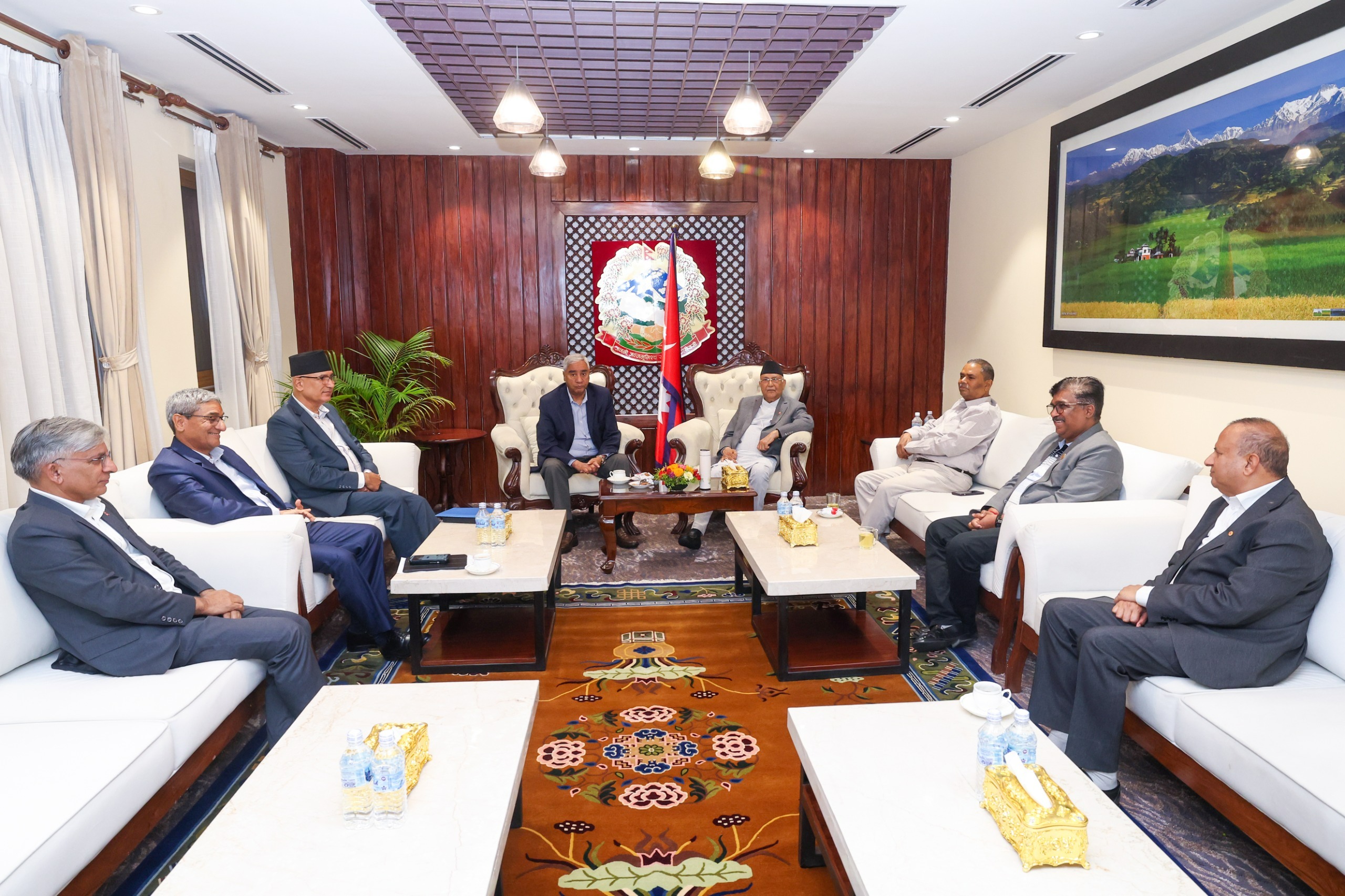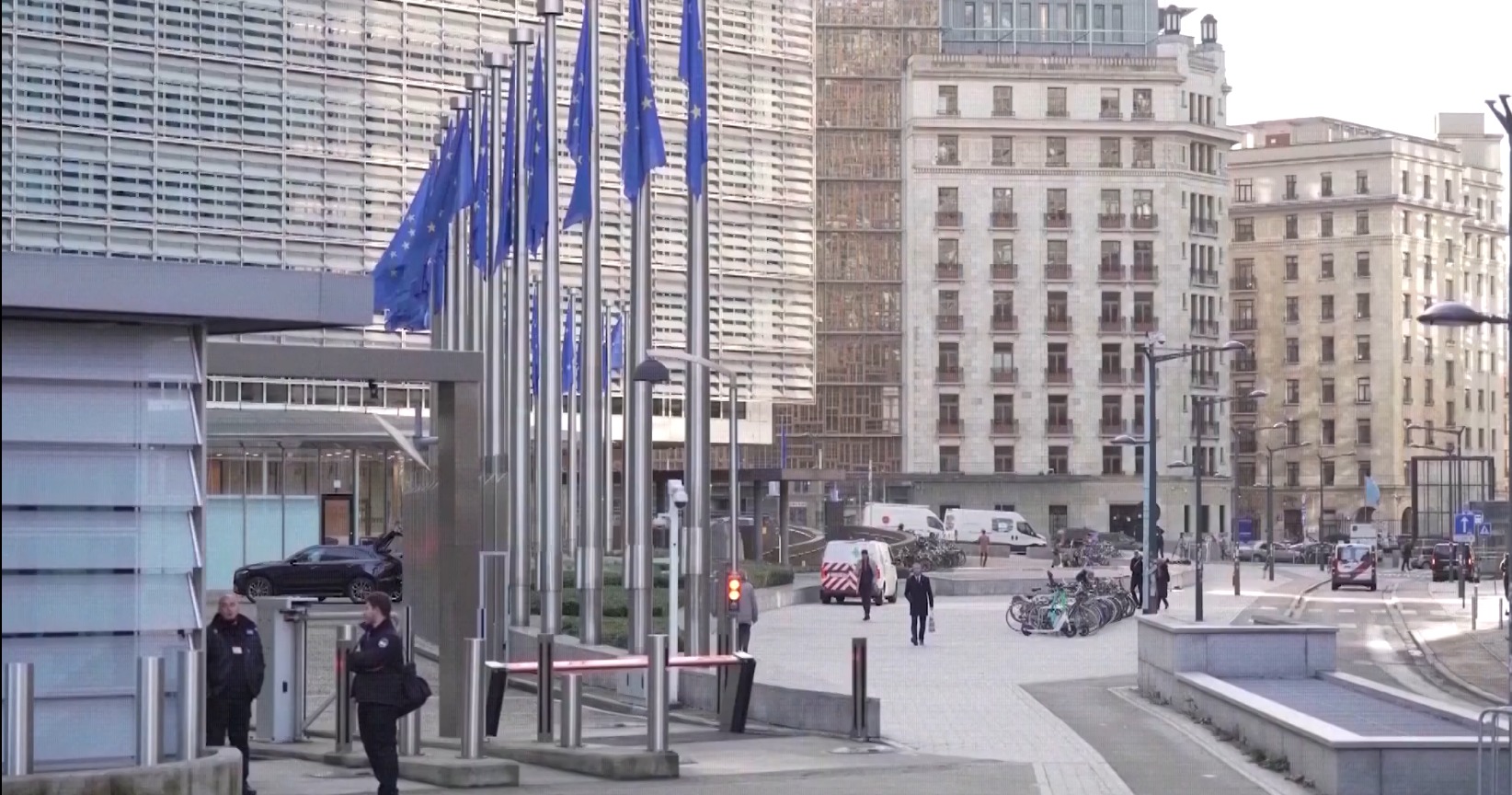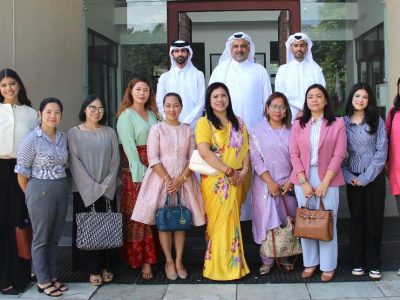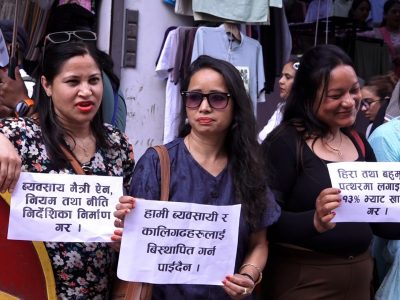Converting waste into Cash; Solution for Kathmandu Valley

Photo: Simon Paudel/ DC Nepal
Kathmandu, August 8. The management of biodegradable wastes in Kathmandu Valley is believed to be no longer a pressing problem as garbage management is to begin from mid of August this year.
Identification of place at Kirtipur in Kathmandu district to manage such garbage is likely to offer a viable solution to Valley’s pertinent problems. Around 50 ropani of land has been obtained by the Kathmandu Metropolitan City (KMC) for the same.
Initially, around 40,000 kilos recyclable wastes would be collected from eight wards of KMC and those wastes would be turned into manure at this site and be sold at a subsidized rate. KMC is also keeping an eye out for other viable sites for the same.
The Metropolis had been dumping all sort of garbage to Bancharedanda and Sisdol in Nuwakot district for nearly a decade and half. The garbage management faced obstructions time to time during this period. The KMC recently identified Kirtipur’s site for sustainable and effective management of wastes especially the compostable ones.
The KMC decided that it will no longer dump harmful garbage in Bancharedanda. Nabin Manandhar, spokesperson at the KMC, shared that team led by KMC mayor Balendra Shah was hunting more prospective sites in and around Chandragiri, Dakshinkali, Nagarjuna, Tarkeshower and Banepa (outside of Valley) to continue the waste management bid.
The sites available so far for garbage management span from 50 ropanis to 150. The KMC team is still looking for more suitable and less expensive land for the same, said Manandhar.
The KMC has already started segregation of biodegradable and non-biodegradable garbage from the source since 17 July. The Garbage Management Act-2068 BS has provision of classification of garbage.
Private garbage collectors to be brought under ambit of law
Although wastage classification project has been implemented in all 32 wards of the KMC, wastages have been managed by private companies in 23 wards while KMC itself manages wastages in remaining 9 major wards.
Locals complained those places where KMC had been managing garbage sees continuation in management while garbage remain to be collected and dumped for nearly two months in those wards managed by private companies.
Dwellers in those wards grieved that the private sectors were engaged in money-making only rather than delivering. The irresponsibleness towards the public had led to irregular garbage management in those wards, the locals in those wards understand.
The local level administration in those wards have warning erring garbage collecting private companies of action if they do not collect the garbage from the designated places.
Lalitpur metropolis mayor Chiribabu Maharjan pressed an idea of managing waste within the local government where it is produced. “Attention of the federal government is required for the same.”
The mayor sounded the need for clear provisions of level-wise jobs descriptions of the government in a new law regarding the waste management.
The roles and responsibilities, modality of coordination among the federal, province and local governments, framework of joint-investment and the ways of managing household, institutional, industrial, electric and post-disaster wastes should be clearly mentioned in the laws, he added.
Similarly, Chandragiri municipality mayor Ghanshyam Giri said the role of Province Government in waste management should be ensured in the law as per the spirit of federalism.
Level-wise works and responsibilities of the government in production, collection, disposal and the entire management procedures along with their effective implementation should be guaranteed in the new law, according to him.
The nature of wastes whether it is from household, or from industries and the service sector be considered in mind while identifying the probable dumping site, he stressed.
Besides, issues concerning environmental pollution from waste and its negative implications on public health, the responsibilities of three-tier government in waste management, inter-local-level coordination and the utilization of waste as means of economic gains should be the priorities ahead, according to chief of other local governments.
Alternative route to landfill site to be established
Process has begun to identify and establish a route to the Bancharedanda landfill as an alternative to the regular route which gets disrupted by monsoon rains each year, posing challenges to the transport of waste.
The work to this regard has begun in cooperation among the KMC and other 17 local governments in the Kathmandu Valley.
It is said the section from Mudkhukhola to Bancharendanda remains disrupted by rains for several weeks, causing challenges in the waste management. A gravel road at Mudkhukhola serving as an alternative access to Bancharedanda is likely to be upgraded soon and the KMC has allocated Rs two million for this project in the current fiscal year.
The 18 local levels in the Kathmandu Valley are mulling resolving the problem through talks in the face of warning from local people that they will stop the works related to waste management from August 17 citing works are not being done as per the agreement.
The waste generated in Kathmandu Valley was started to be dumped at Sisdol, Kakani rural municipality of Nuwakot since 2005, initially for two years. This project was supported by Japan International Cooperation Agency (JICA). Kathmandu Valley’s waste is being dumped at Sisdol even for 17 years now. The waste was managed in the landfill site with an area of 432 ropanis (1 ropani is equivalent to 508.72 m2) at Sisdol. However, 1,792 ropanis land has been allocated at Bancharedanda for managing the waste.
Forty per cent of the waste produced in the Valley can be managed. Every local level ward is said to be preparing to purchase the materials that can be reused for this purpose. One thousand two hundred metric tonnes waste is being managed at Sisdol each day. Out of this amount of waste, Kathmandu metropolis alone contributes the highest amount 500 metric tonnes. Minimum 200 vehicles transport the garbage managed by the private sector and the KMC daily. Only 150 vehicles are transporting the waste to the dumping site at present due to the ongoing road repair works.
One thousand to 1,002 metric tonnes of waste is carried to the Sisdol dumping site on a daily basis. The problem in managing waste of Kathmandu Valley has been recurring from time to time as the waste is dumped at Sisdol in unplanned manner due to lack of an alternative. Before this, Kathmandu’s waste used to be managed in Gokarna. Now it has started to be managed at Bancharedanda after Sisdol. Actually, the work on managing the waste at Bancharedanda should have been carried out two years back but it is not moving ahead in a smooth manner till date.
Managing the federal capital’s waste is becoming more challenging. Piles of stinking waste on roadside and corners of cross-roads of the city are a common sight. Sometimes, the waste is not collected for weeks. KMC is carrying out works so that the Kathmandu denizens will not face these kinds of problems in the coming days. Works are being done in a phase-wise manner to that end.
Waste has piled up letting out stench on the side of the road or cross-roads in the Valley has it could not be transported to the landfill site sometimes due to the protest of the locals around the landfill site and sometimes due to rain.
Engineer and waste management expert Sunil Lamsal said preparations are being made to keep the segregated waste collected from the households at separate places at Bancharedanda as well for some time.
The KMC dwellers opine that the problem will remain the same when the waste is dumped at the same place by segregating the two types of waste at a time when the locals of Bancharedanda are seeking an alternative and there is demand for managing the waste at its source itself.
The experts have suggested segregating the waste into biodegradable and non-degradable at its source itself, reducing the production of waste, using linen or jute bags as an alternative to plastic bag, promotion of ‘zero waste’ concept and using modern technology in waste management for addressing this perennial problem of managing the solid waste in the Valley.
Except for the cover picture, this story has not been edited by DCNepal staff and is published from a syndicated feed by National News Agency.
Facebook Comment
latest Video
Trending News
- This Week
- This Month
















